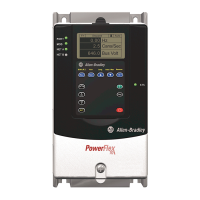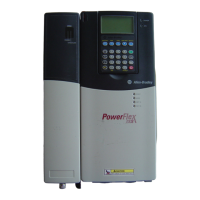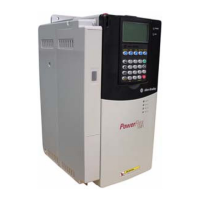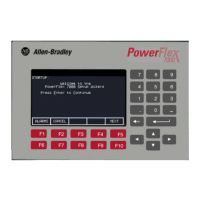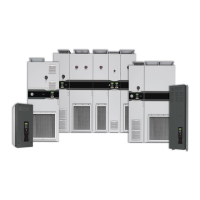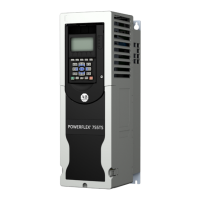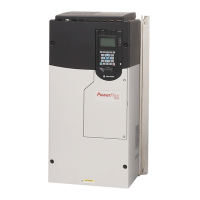Process PI Loop 2-147
Configuration Example:
The PI reference meter and PI feedback meter should be displayed as
positive and negative values. Feedback from our dancer comes into Analog
Input 2 as a 0-10V DC signal.
• [PI Reference Sel] = 0 “PI Setpoint”
• [PI Setpoint] = 0 %
• [PI Feedback Sel] = 2 “Analog In 2”
• [PI Reference Hi] = 100 %
• [PI Reference Lo] = –100 %
• [PI Feedback Hi] = 100 %
• [PI Feedback Lo] = –100 %
• [Analog In 2 Hi] = 10V
• [Analog In 2 Lo] = 0V
Now 5V corresponds to 0% on the PI Feedback, so we will try to maintain a
PI setpoint of 0% (5V). Now [PI Ref Meter] and [PI Fdback Meter] are
displayed as bipolar values.
PI Setpoint
This parameter can be used as an internal value for the setpoint or reference
for the process. If [PI Reference Sel] points to this Parameter, the value
entered here will become the equilibrium point for the process.
PI Output
The PI Error is then sent to the Proportional and Integral functions, which
are summed together.
PI Gains
The PI Proportional Gain and the PI Integral Gain parameters determine the
response of the PI.
The PI Proportional Gain is unitless and defaults to 1.00 for unit gain. With
PI Proportional Gain set to 1.00 and PI Error at 1.00% the PI output will be
1.00% of maximum frequency.
The PI Integral Gain is entered in seconds. If the PI Integral Gain is set to
2.0 seconds and PI Error is 100.00% the PI output will integrate from 0 to
100.00% in 2.0 seconds.
PI Feedback Scaling
[Torque Ref A Sel] = “Analog In 1”
[Analog In 2 Hi]
10 V
[PI Feedback Hi]
100 %
[Analog In 1 Lo]
0V
[PI Feedback Lo]
-100 %
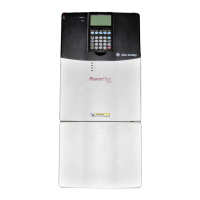
